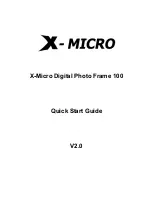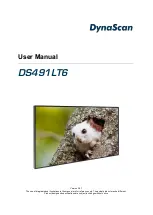
DMTA-10045-01EN, Rev. E, August 2016
Applications
163
First-Pass Analysis
This sub-section shows you how you can use the first probe pass to “clean up” the
spectrum view so that subsequently with the second probe pass you can focus only on
the useful frequencies. This is particularly important for fiberglass or aluminum skin
materials, because they usually return more signals to the pitch-catch probe, which
can be misleading when doing the frequency analysis.
To distinguish the useful frequencies from unsuitable frequencies (first probe pass)
1.
Place the probe tips on a good part of the standard, then press the GAIN key
(
) and adjust the
GAIN
until the swept figure is contained between two
divisions inside the alarm box (see Figure 6-57 on page 163).
Figure 6
‑
57 The swept figure between two divisions
2.
Lift probe into the air and press the CAL NULL key (
).
3.
Hold the probe still on a good part of the standard, and then press and hold the
REF SAVE key (
) to save the background reference signal (see Figure 6-58 on
IMPORTANT
Summary of Contents for BondMaster 600
Page 8: ...DMTA 10045 01EN Rev E August 2016 Table of Contents viii ...
Page 10: ...DMTA 10045 01EN Rev E August 2016 List of Abbreviations x ...
Page 26: ...DMTA 10045 01EN Rev E August 2016 Important Information Please Read Before Use 16 ...
Page 28: ...DMTA 10045 01EN Rev E August 2016 Introduction 18 ...
Page 32: ...DMTA 10045 01EN Rev E August 2016 Chapter 1 22 ...
Page 72: ...DMTA 10045 01EN Rev E August 2016 Chapter 3 62 ...
Page 78: ...DMTA 10045 01EN Rev E August 2016 Chapter 4 68 Figure 4 2 Crosshairs and the NULL point ...
Page 130: ...DMTA 10045 01EN Rev E August 2016 Chapter 5 120 ...
Page 216: ...DMTA 10045 01EN Rev E August 2016 Chapter 7 206 ...
Page 230: ...DMTA 10045 01EN Rev E August 2016 Appendix A 220 ...
Page 234: ...DMTA 10045 01EN Rev E August 2016 Appendix B 224 ...
Page 240: ...DMTA 10045 01EN Rev E August 2016 List of Figures 230 ...
Page 242: ...DMTA 10045 01EN Rev E August 2016 List of Tables 232 ...
















































